HIPAA and OSHA Training: 10 Essential Tips for Healthcare Professionals
In the fast-paced and complex environment of healthcare, safeguarding patient privacy and ensuring workplace safety are foundational to providing quality care. The Health Insurance Portability and Accountability Act (HIPAA) and the Occupational Safety and Health Administration (OSHA) regulations serve as critical frameworks that guide healthcare professionals in maintaining these standards. Proper training in these areas is not just a legal obligation but a moral one—protecting sensitive information, preventing injuries, and fostering a culture of safety and trust within healthcare settings.
This comprehensive guide explores ten essential tips for developing and maintaining effective HIPAA and OSHA training programs tailored specifically for healthcare professionals. Whether you are a healthcare administrator, compliance officer, or frontline worker, understanding these key strategies will help ensure your facility meets regulatory requirements, minimizes risks, and promotes a safe, secure environment for both patients and staff. You’ll learn how to craft customized training programs, foster ongoing education, and embed compliance into daily routines, ultimately strengthening your organization’s reputation and operational integrity.
Understanding the Importance of HIPAA and OSHA Compliance in Healthcare
HIPAA and OSHA serve as the backbone of regulatory standards in healthcare, each focusing on different but equally vital aspects of patient and worker protection. HIPAA’s primary role is to safeguard patient privacy by establishing rules for handling protected health information (PHI). Violations can lead to hefty fines, legal action, and damage to an organization’s reputation. OSHA, on the other hand, aims to prevent workplace injuries and illnesses by setting standards for safety practices, including infection control and hazard communication.
Non-compliance with these regulations can have severe legal and ethical consequences. Healthcare facilities found neglecting privacy rules risk lawsuits, financial penalties, and loss of licensure, while neglecting OSHA standards can result in workplace injuries, occupational illnesses, and even shutdowns. Moreover, effective training programs serve as proactive measures—educating staff about their responsibilities reduces the likelihood of violations and enhances overall patient safety. They also demonstrate a facility’s commitment to ethical practices, which can positively influence accreditation and public trust.
Beyond legal compliance, these programs are essential in fostering a culture of continuous improvement. When staff understand the importance of privacy and safety, they are more likely to adhere to protocols, report hazards or breaches, and contribute to a safer, more respectful healthcare environment. In today’s healthcare landscape, compliance is intertwined with reputation management and the delivery of high-quality patient care.
Tip 1: Develop a Comprehensive Training Program Tailored to Healthcare Settings
One of the most effective ways to ensure compliance is by creating a training program that is both comprehensive and tailored to the specific roles within your healthcare facility. Different staff members—nurses, physicians, administrative staff, cleaning personnel—have distinct responsibilities and risk exposures, necessitating customized content that addresses their unique needs.
Customizing training involves identifying the specific regulations and best practices relevant to each role. For example, clinical staff involved in procedures need in-depth knowledge of bloodborne pathogen standards and proper PPE use, while administrative staff require a clear understanding of HIPAA privacy rules and data security measures. Incorporating role-specific scenarios makes training more relevant and engaging, increasing retention and application in daily routines.
In addition, a successful program incorporates various training methods to accommodate different learning styles and schedules. This includes in-person sessions for hands-on practice, online modules for flexible access, and interactive demonstrations to reinforce key concepts. Regular review and updates of training materials are crucial to reflect evolving regulations, technological advancements, and emerging risks. This ongoing process ensures that staff remain current and confident in their responsibilities.
Tip 2: Emphasize the Principles of Patient Privacy and Confidentiality
Protecting patient privacy is a core component of HIPAA compliance. Clear understanding of HIPAA privacy rules and the concept of protected health information (PHI) is essential for all healthcare staff. PHI includes any individually identifiable health data—such as medical histories, test results, or billing information—whether stored electronically, on paper, or communicated verbally.
Training should cover strategies for maintaining confidentiality in both digital and physical environments. This involves securing electronic records through encryption and access controls, as well as physically safeguarding paper documents by locking filing cabinets and restricting access. Staff must also be aware of common pitfalls—such as sharing passwords, leaving sensitive information unattended, or discussing patient details in public areas—and how to avoid these breaches.
Real-world case studies revealing privacy violations serve as powerful educational tools, illustrating the consequences of lapses and emphasizing best practices. For example, a hospital might analyze a breach caused by an employee leaving a computer unlocked, highlighting the importance of vigilance. Reinforcing the ethical obligation to protect patient information not only ensures legal compliance but also builds trust between providers and patients.
Tip 3: Clarify OSHA Regulations Relevant to Healthcare Workers
OSHA regulations in healthcare focus on minimizing occupational hazards, particularly those related to bloodborne pathogens, chemical exposure, workplace violence, and ergonomic risks. Key components include exposure control plans, which outline procedures to prevent infections from blood or bodily fluids, and standards for the proper use of personal protective equipment (PPE).
Proper disposal of hazardous waste—such as sharps, contaminated dressings, and chemical substances—is vital to prevent injury and infection. Training should detail the correct procedures for segregating waste, using sharps containers, and following spill response protocols. Additionally, workplace violence prevention is increasingly recognized as essential, especially in emergency departments, psychiatric units, or areas with high patient agitation. Staff should be familiar with de-escalation techniques, safety alarms, and reporting procedures.
Protocols for reporting and managing work-related injuries and exposures are equally important. Staff must know how to immediately respond to injuries, seek medical attention, and document incidents properly. Ensuring compliance with OSHA standards not only reduces the risk of injuries but also fosters a safer and more supportive work environment.
Tip 4: Incorporate Interactive and Scenario-Based Learning
Active participation enhances learning retention far more effectively than passive listening. Incorporating interactive elements such as role-playing exercises allows staff to practice privacy and safety protocols in simulated environments. For example, staff might role-play patient interactions to practice maintaining confidentiality or simulate emergency responses to reinforce OSHA procedures.
Scenario-based learning helps staff understand how to apply regulations in real-life situations, which improves decision-making skills under pressure. Quizzes and assessments serve as valuable tools to gauge understanding and identify areas needing reinforcement. These methods also make training sessions more engaging, encouraging staff to participate actively and internalize best practices.
Active learning not only improves compliance but also boosts confidence among staff, ensuring they are prepared to handle complex, high-stakes situations with competence and professionalism.
Tip 5: Ensure Accessibility and Flexibility of Training
Healthcare facilities operate around the clock, often with staff working irregular or overnight shifts. To maximize participation, training programs must be accessible in multiple formats—such as e-learning modules, mobile-friendly platforms, and in-person sessions scheduled at various times. This flexibility ensures that every staff member, regardless of shift, can complete mandatory training.
Providing materials in multiple languages helps accommodate diverse workforces, reducing language barriers that could hinder understanding. Accessibility also involves ensuring that content is usable for staff with disabilities, including options for screen readers, subtitles, or alternative formats. Tracking completion rates and scheduling refresher courses regularly maintains ongoing compliance and knowledge retention.
By making training adaptable and accessible, healthcare organizations demonstrate their commitment to inclusivity and continuous improvement, ultimately fostering a more informed and compliant workforce.
Tip 6: Promote a Culture of Compliance and Continuous Education
Creating a culture that values compliance begins with leadership’s active involvement. When managers and senior staff model best practices, it sets a standard for all team members to follow. Regularly engaging staff through meetings, newsletters, and recognition programs helps reinforce the importance of HIPAA and OSHA standards.
Encouraging staff to ask questions and report concerns without fear of reprisal promotes transparency and proactive problem-solving. Recognizing compliance efforts—such as through awards or acknowledgments—motivates ongoing adherence to protocols. Additionally, providing updates on regulatory changes and emerging risks keeps staff informed and prepared for new challenges.
Fostering a culture of continuous education ensures that compliance becomes ingrained in daily routines, reducing violations and enhancing overall safety and privacy standards.
Tip 7: Document Training and Maintain Accurate Records
Maintaining detailed records of training sessions, attendance, and assessment results is essential for demonstrating compliance during audits or inspections. Digital platforms simplify this process, enabling automated tracking and reporting, which reduces administrative burden and minimizes errors.
Proper documentation includes scheduling records, training materials, participant signatures, and assessment scores. These records should be stored securely to protect staff privacy and be readily accessible when needed. Well-maintained records provide evidence of ongoing compliance efforts and help identify areas where additional training may be necessary.
Ensuring that training records are accurate and up-to-date not only aids in regulatory audits but also supports a culture of accountability and continuous improvement within the organization.
Tip 8: Focus on Practical Implementation and Daily Practices
Training should translate into tangible daily practices that staff can easily incorporate into their workflows. Visual cues such as signage reminding staff of privacy protocols or PPE requirements reinforce compliance in real-time. Providing quick-reference guides and checklists helps staff verify procedures before completing tasks, reducing errors.
Supervisors and mentors play a crucial role in reinforcing proper practices through observation and feedback. Regularly reviewing procedures, discussing challenges, and celebrating successes foster an environment where safety and privacy are prioritized. Embedding these protocols into routine activities ensures that compliance is not viewed as an additional burden but as an integral part of delivering high-quality care.
Tip 9: Stay Informed on Regulatory Updates and Industry Best Practices
The landscape of healthcare regulations is continually evolving, making it essential for organizations to stay current. Subscribing to official updates from the Department of Health and Human Services (HHS) and OSHA provides authoritative information on regulatory changes and guidance.
Participation in professional organizations and industry seminars keeps staff informed about emerging risks and best practices. Sharing this knowledge through newsletters, team meetings, or dedicated training sessions helps ensure everyone remains aligned with the latest standards. Proactively updating training programs to incorporate new regulations demonstrates responsiveness and commitment to excellence.
Tip 10: Evaluate and Improve Training Effectiveness Continuously
Effective training is an ongoing process that requires regular evaluation. Collecting feedback from participants helps identify strengths and areas for improvement, ensuring the content remains relevant and engaging. Monitoring incident reports, breach occurrences, and compliance audit results provides quantitative data on how well staff are applying their training.
Analyzing this information enables organizations to refine training content, delivery methods, and reinforcement strategies. For example, if audits reveal persistent privacy breaches, targeted refresher sessions may be necessary. Continual improvement fosters a dynamic training environment that adapts to changing needs and emerging risks, ultimately strengthening the organization’s compliance posture.
Conclusion: Building a Culture of Safety and Privacy in Healthcare
Upholding HIPAA and OSHA standards is an ongoing commitment that forms the foundation of trustworthy, effective healthcare delivery. Through comprehensive, engaging, and regularly updated training programs, healthcare organizations can empower their staff to protect patient privacy and maintain a safe work environment. This not only ensures regulatory compliance but also enhances patient trust, staff morale, and organizational reputation.
Healthcare professionals and administrators must view training as a vital investment—one that directly impacts the quality of care and safety outcomes. By prioritizing continuous education, fostering transparency, and integrating compliance into daily routines, healthcare facilities can build a resilient culture rooted in safety, respect, and excellence. ITU Online Training offers valuable resources to support these efforts, helping organizations stay ahead of evolving standards and industry best practices.
Take proactive steps today—review your training programs, incorporate interactive learning, and commit to ongoing improvement. The effort you invest now will yield a safer, more compliant, and more compassionate healthcare environment for everyone involved.










